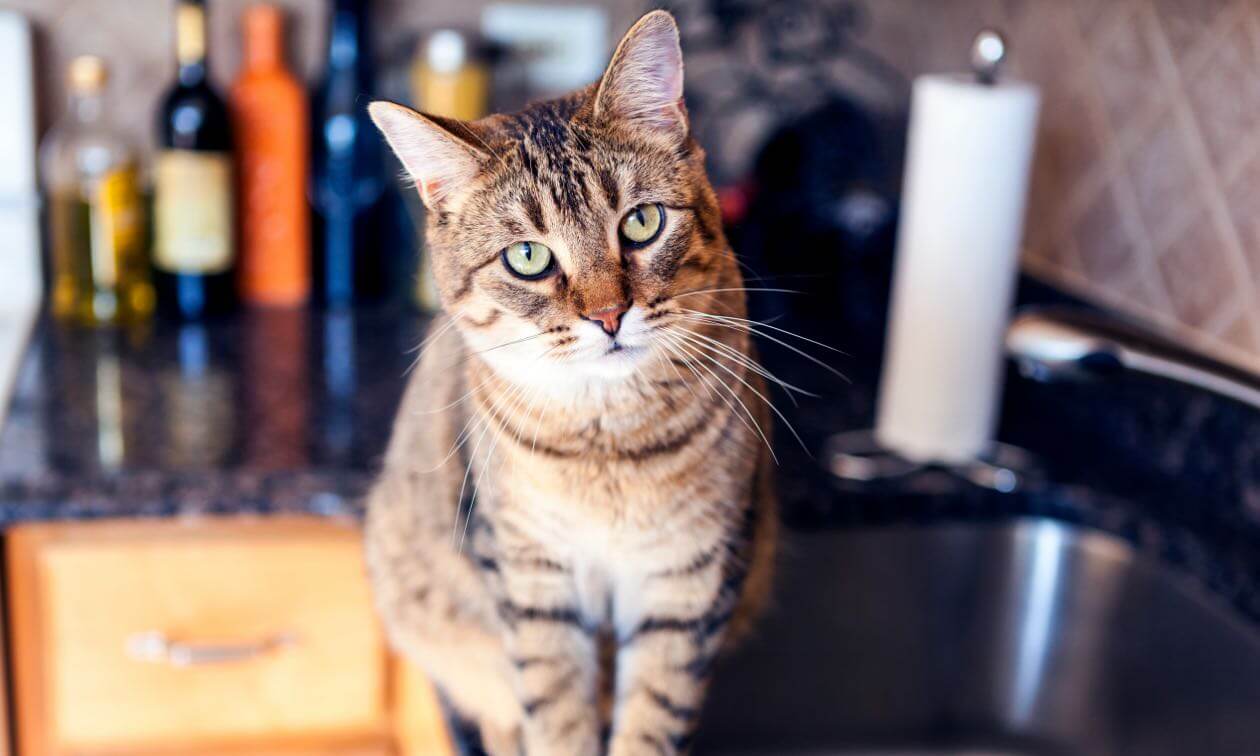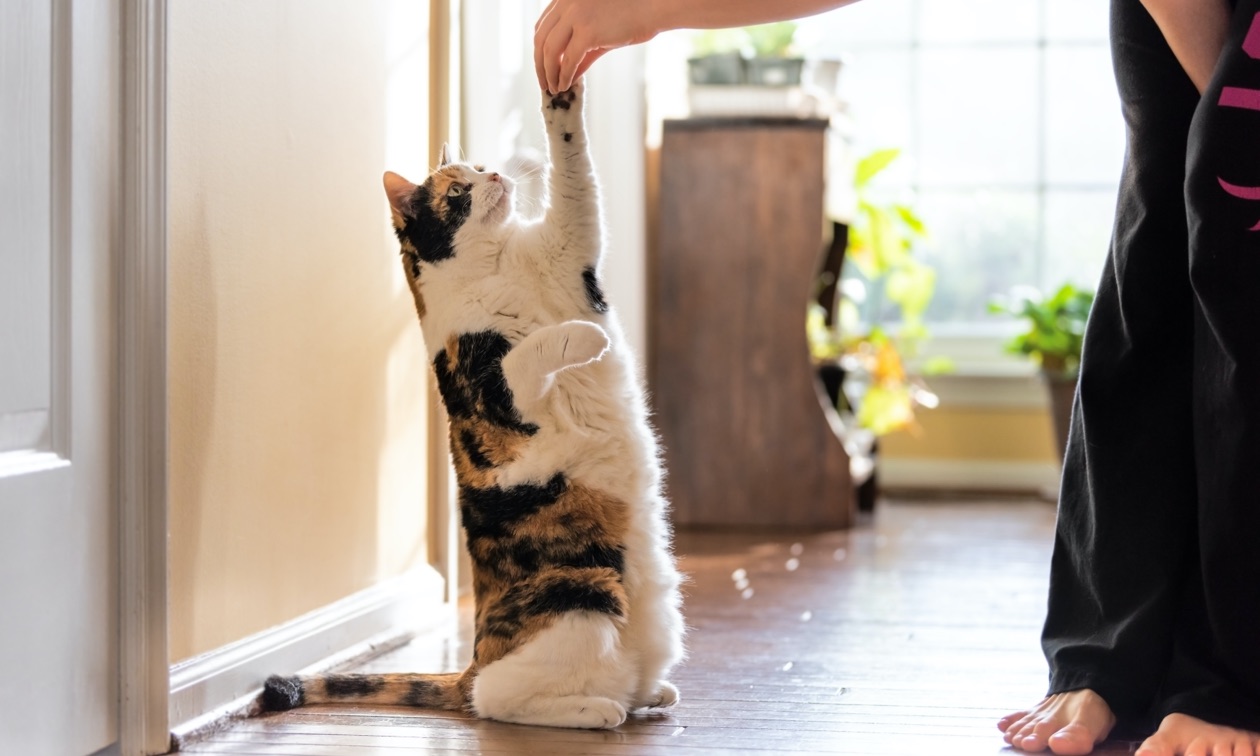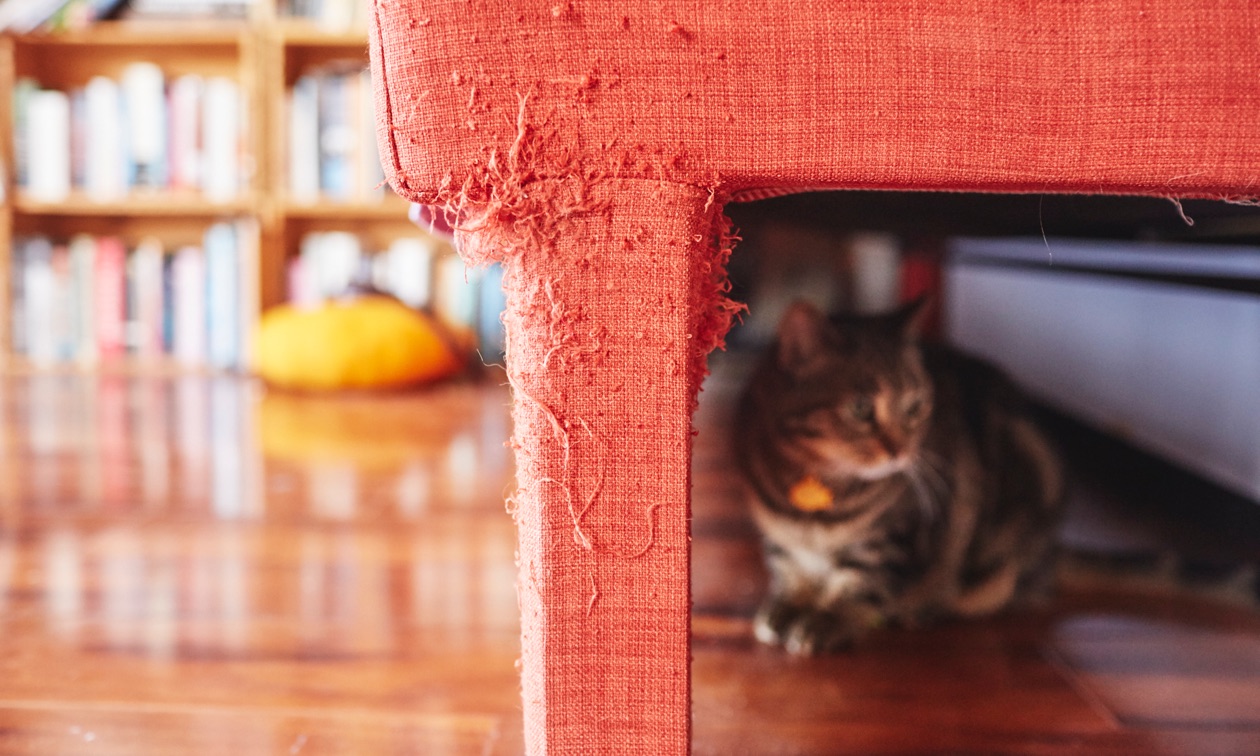Cats are known for their agility — they have a superhero-like ability to leap tall buildings in a single bound. (OK, maybe they can’t jump quite that high.) But your countertops, tabletops, and even the top of the refrigerator are all fair game.
What if you don’t want your cat on the counters? Can you teach them to stay down or, better yet, give them a more acceptable option to meet their need to get up high? Absolutely!
Why Cats Jump on Counters and Other High Places
There are several reasons cats like to be up high. Believe it or not, they’re meeting an instinctual need. Understanding why this happens will make developing an effective training plan easier.
- Cats Are Natural Explorers
They have an innate desire to investigate. - Cats Like Higher Vantage Points
In the wild, cats search for higher areas from which they can better observe their territory and monitor for prey and predators. - Cats Are Built To Jump
The large muscles in the rear legs make it easy for them to extend and lengthen. They also have a flexible spine cushioned with shock-absorbing discs, making for smooth landings. - Kitchen Counters Often Mean Snacks
The smell of food (or even crumbs or a dish in the sink) is tempting. - Counters Mean Access to Running Water
The allure of running water, whether from the kitchen or bathroom sink, can be a strong motivator for some cats to jump on counters where the sink is located. - That’s Where All the Action Is
Multiple times throughout the day, activity in the kitchen can pique a cat’s interest.
How to Train Your Cat to Stay Off the Counter
- Eliminate Temptation
First, tackle the most obvious trigger — food! You can’t realistically expect a hungry cat not to go where the food is. Keeping your counters and sink clean is vital. Rinse dishes right away and avoid storing food on the counters — especially in plastic bags. Cats can tear into the plastic to get to the food, which is a potentially dangerous situation. They could ingest part of a plastic bag or food contents that are toxic to them. There’s also a risk of suffocation should their face become trapped in the plastic bag. - Make the Counter Unappealing for Your Cat To Walk On
You don’t want to cause any discomfort or stress — you just want your cat to prefer not to step on the counter. You can try placing crinkled aluminum foil on the counter or double-sided pet tape on a piece of cardboard. You can set this where needed on the counter as opposed to applying the tape directly to the counter. - Give Your Cat an Acceptable Alternative To Meet Their Needs
It’s important to try and figure out why your cat is jumping on the counter in the first place. They’re probably trying to meet a specific need, and maybe you can give them an acceptable alternative. For example, if your cat heads for the countertops to get away from the dog, or the kitchen is where all the action is at dinner time, providing a cat tree or cat shelf in that area may be the best choice. Perhaps too much time between your cat’s meals leaves them hungry, so they’re on the counters looking for food. Or your cat may be suffering from boredom. You might look at their feeding and play schedules to address their needs in these cases. - Stop Your Cat From Jumping on the Counter
If your cat jumps on the counter, as neutrally as possible, pick them up and set them on the floor. Don’t talk to them, look at them, or make a big deal out of it. If your cat is getting on the counter as attention-seeking behavior, even telling them “no” can feel like attention. Keep it neutral. - Redirect Them to the Appropriate Alternative
Wait about 60 seconds after removing your cat neutrally from the counter. Then use a toy or treat to redirect them to an appropriate high perch to meet that need. You want them to learn that nothing good happens when they get on the counter, and then they are placed on the floor. But when they use the appropriate alternative, they get good things like treats and verbal praise. In time, they’ll prefer the option with the rewards. - Look for Opportunities To Provide Positive Reinforcement
Any behavior that is rewarded is more likely to be repeated. If they use their appropriate alternative perch on their own, be sure to reward them.
What Won’t Work to Keep Your Cat Off the Counter
Avoid using aversives that will cause pain, discomfort, or stress. Products like shock mats and plastic spikes are not helpful. It’s also best to avoid punishment like yelling or squirting with a water bottle (you can’t punish away a cat’s instincts). It’s always better to train the behaviors you would prefer to see from your cat using positive methods.
ZPC-02328






